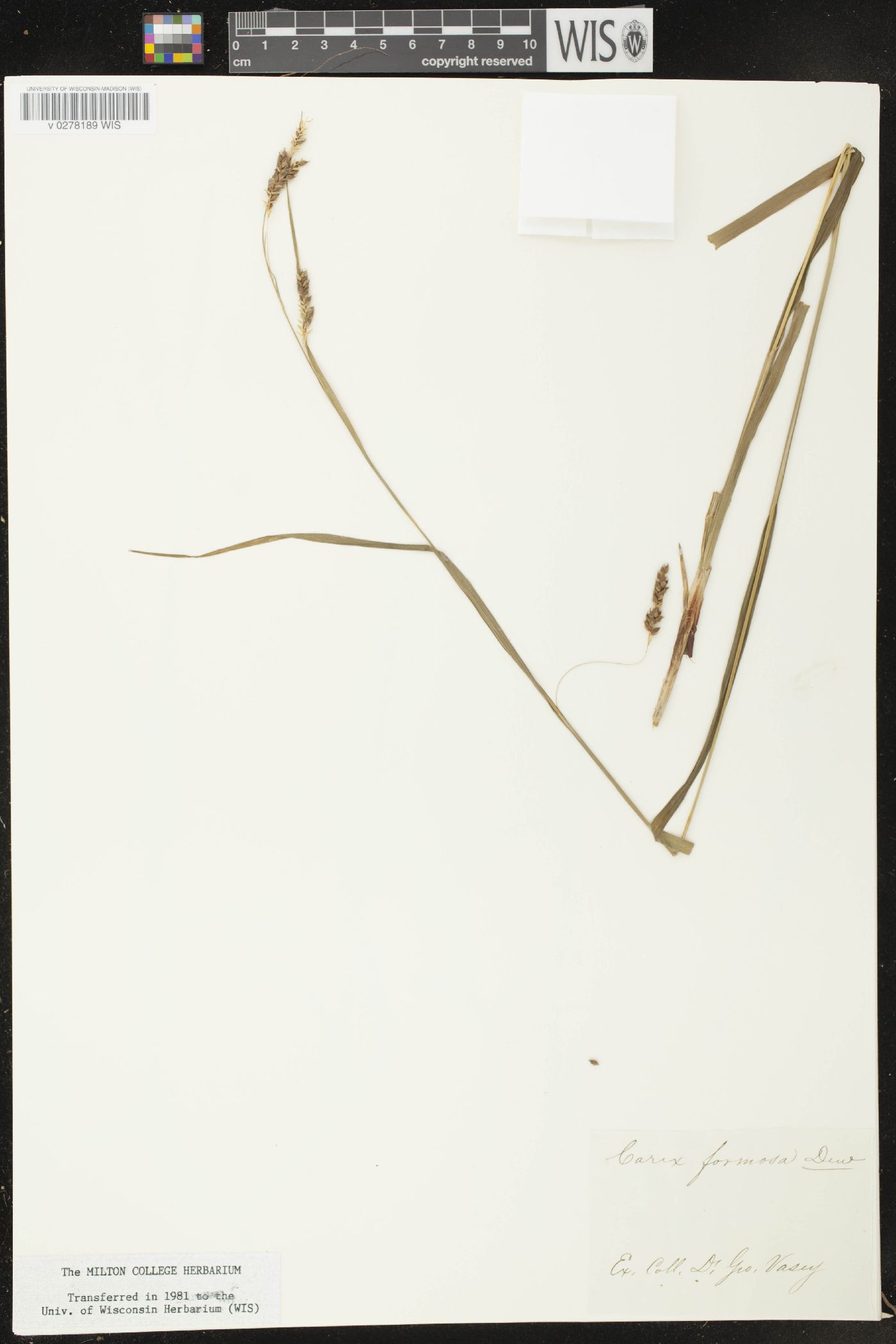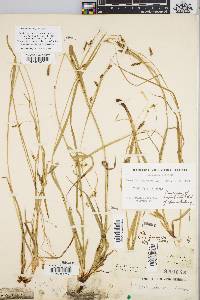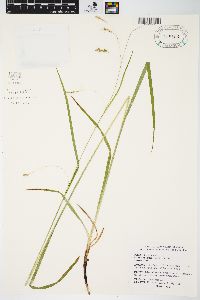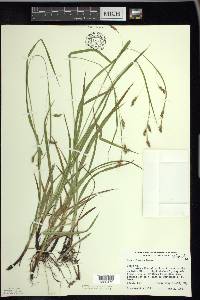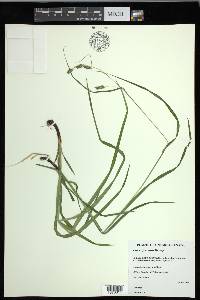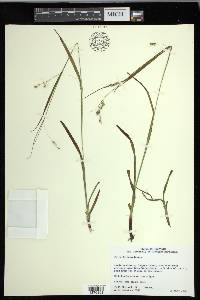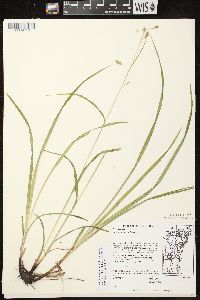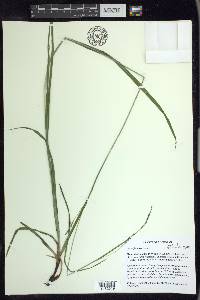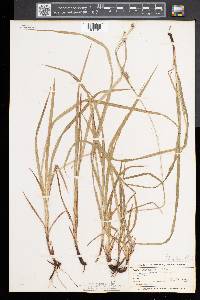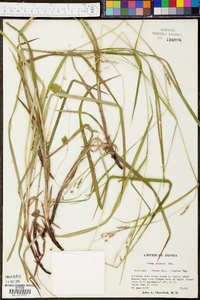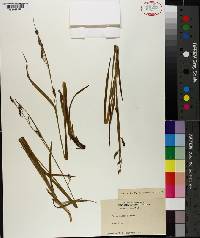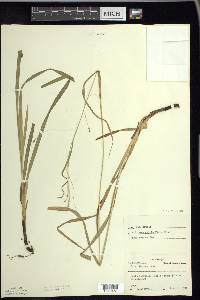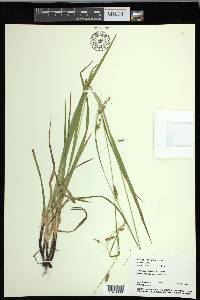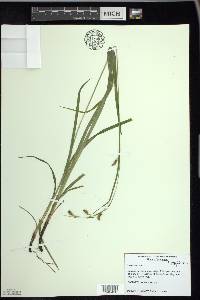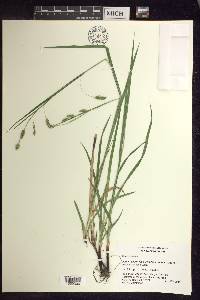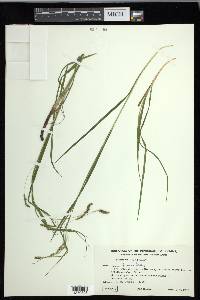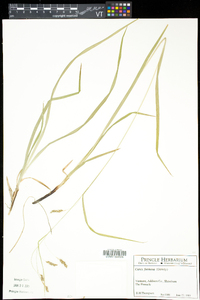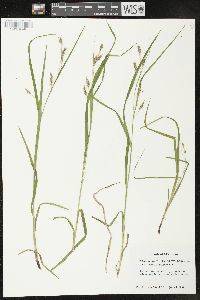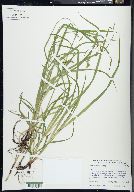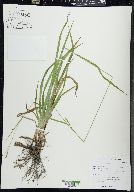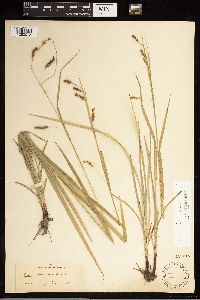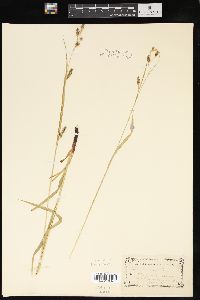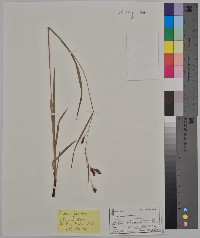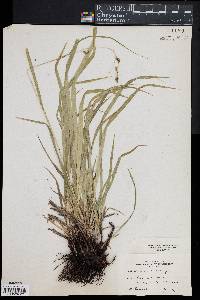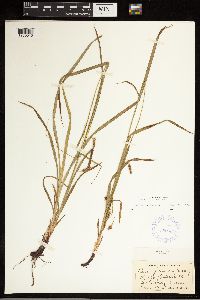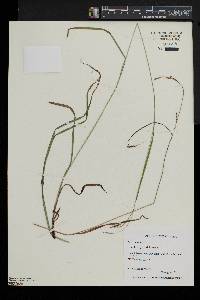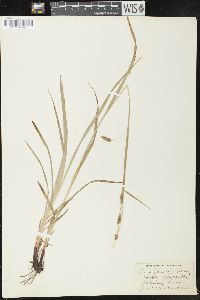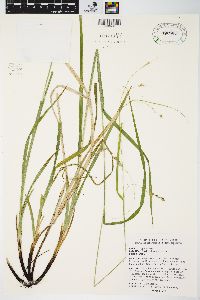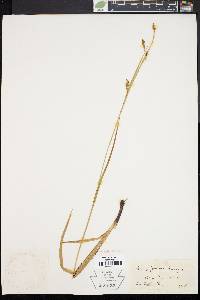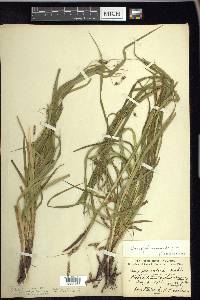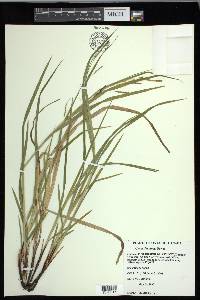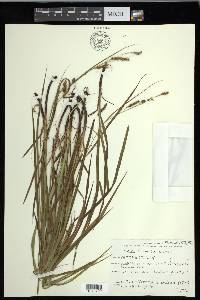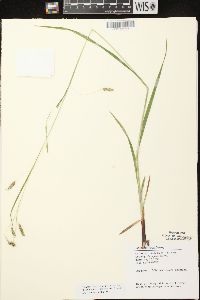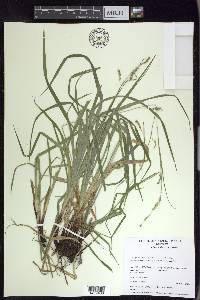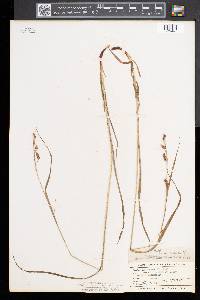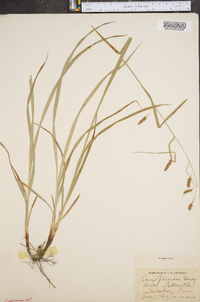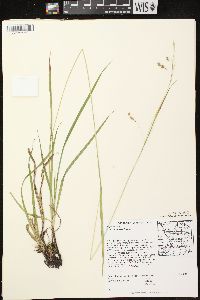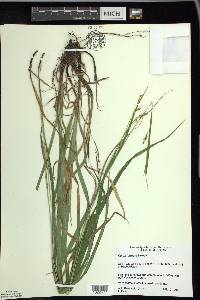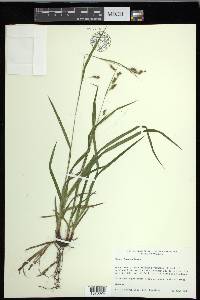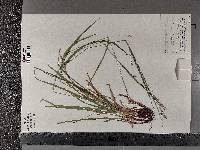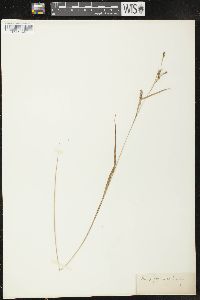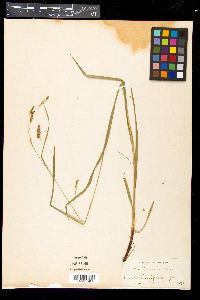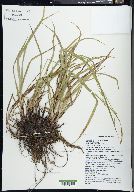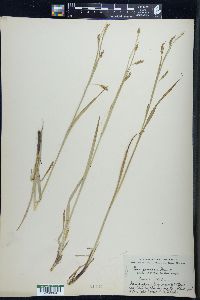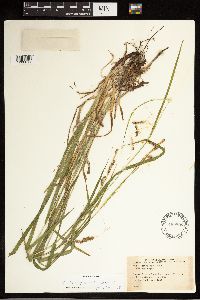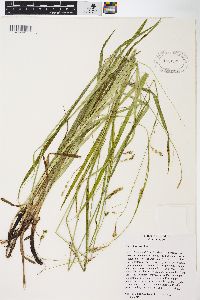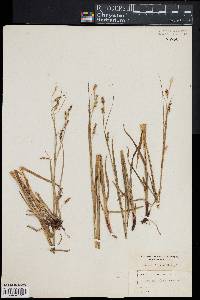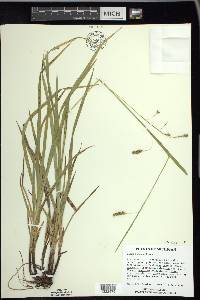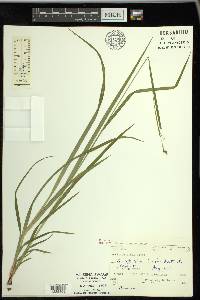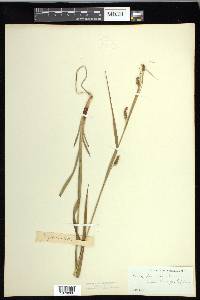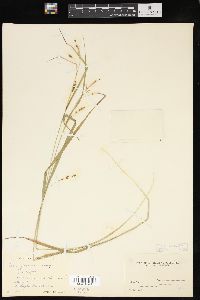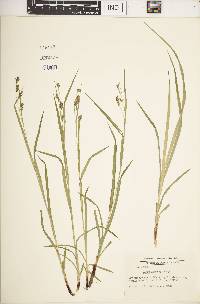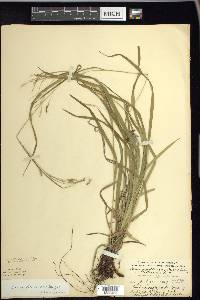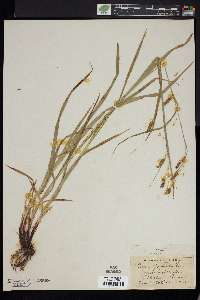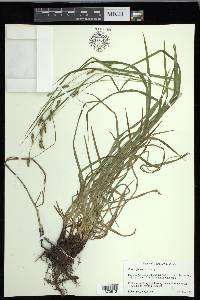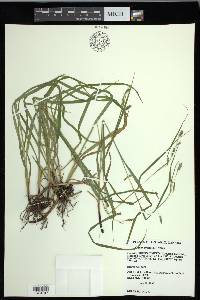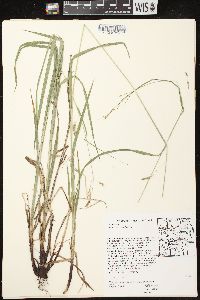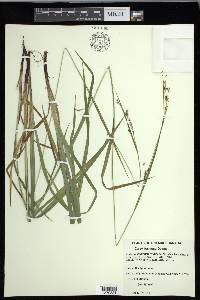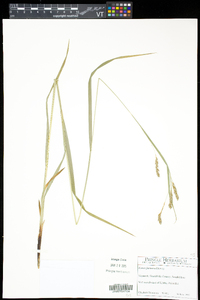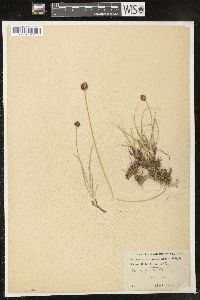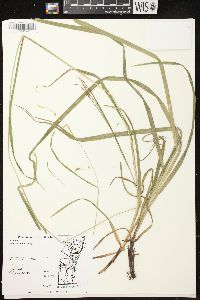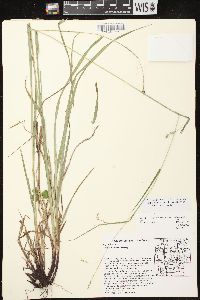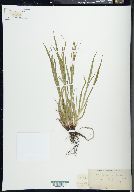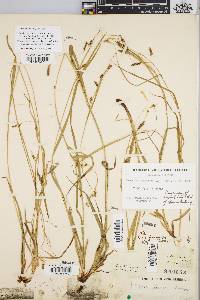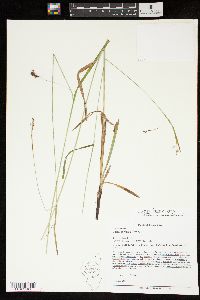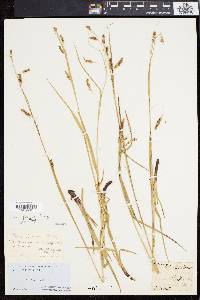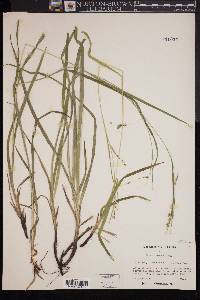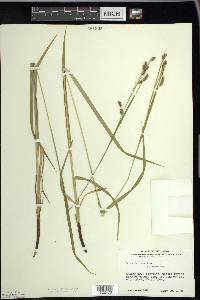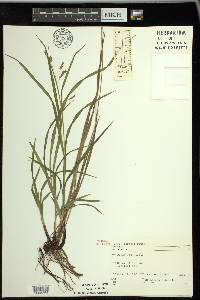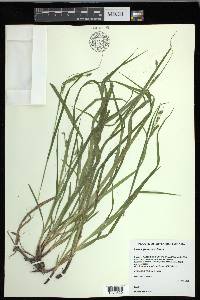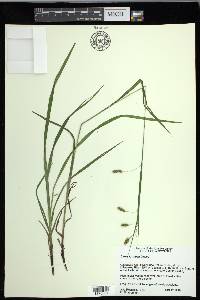
|
|
|
|
Family: Cyperaceae
Handsome Sedge
|
Plants densely cespitose. Culms dark maroon at base; flowering stems 0.5-1 mm thick, 30-80 cm, longer than leaves at maturity, glabrous but scabrous on angles within inflorescence. Leaves: basal sheaths maroon, bladeless, pubescent, sometimes glabrous, others grading from marooon to green on back, white-hyaline, red dotted, and pilose on front; blades flat, 3-7 mm wide, glabrous on adaxial surface, pilose on abaxial surface and margins. Inflorescences: ; peduncles of lateral spikes slender, to 10 cm, usually much longer than spikes, pubescent; of terminal spikes 25-50 mm, pubescent; proximal bracts nearly equaling but usually not exceeding inflorescences; sheaths 35-85 mm; blades 2.5-4.5 mm wide. Lateral spikes 2-4, 1 per node, well separated, drooping at maturity, pistillate except for 1 or 2 basal staminate flowers in each, with 8-25 perigynia per spike attached 1 mm apart, cylindric, 15-25 × 4-6 mm. Terminal spike gynecandrous, 15-30 × 5-6 mm in distal pistillate portion, 1.5-2 mm wide in proximal staminate portion. Pistillate scales pale hyaline tinged with chestnut brown, broad green midrib red dotted, ovate, shorter than mature perigynia, apex acute to cuspidate, awn less than 1 mm, glabrous. Perigynia green, copiously red dotted, 2-ribbed with 7-12 fine veins on each face, loosely enveloping achene, ovoid-ellipsoid, 3.5-5 × 1.7-2 mm, membranous, base with short stipe, apex narrowing to abrupt beak, glabrous; beak minutely bidentate, less than 0.5 mm. Achenes substipitate, 2-2.5 × 1.4-1.5 mm. Fruiting early-mid summer. Mesic to dry deciduous forests and ravines, moist meadows, usually associated with calcareous soils; Ont., Que.; Conn., Ill., Iowa, Mass., Mich., Minn., N.Y., N.Dak., Ohio, Vt., Wis. Carex formosa appears to be confined to areas with calcareous soils making it uncommon and sparsely distributed throughout its range, although some populations are quite large.
Tufted, 3-7 dm, strongly purplish at base; main lvs 3-7 mm wide, hairy beneath; sheaths hairy at least on the back; terminal spike with a few distal perigynia; lateral spikes pistillate, with a few basal staminate fls, well separated, cylindric, 1-3 cm נ5 mm, densely many-fld, erect or spreading, on peduncles about as long; bracts all sheathing, the uppermost much reduced; pistillate scales ovate to obovate, slightly shorter than the perigynia, obtuse to acuminate or cuspidate; perigynia ovoid, 4-5 mm, half as wide, obscurely trigonous, sharply several-nerved, acuminately narrowed to a distinct short beak; achene sharply and concavely trigonous. Moist soil in woods and thickets; Mass., Conn. and s. Que. to Mich., Wis., and N.D. Gleason, Henry A. & Cronquist, Arthur J. 1991. Manual of vascular plants of northeastern United States and adjacent Canada. lxxv + 910 pp. ©The New York Botanical Garden. All rights reserved. Used by permission. |
This project was made possible in part by the Institute of Museum and Library Services [MG-70-19-0057-19].
Powered by Symbiota

